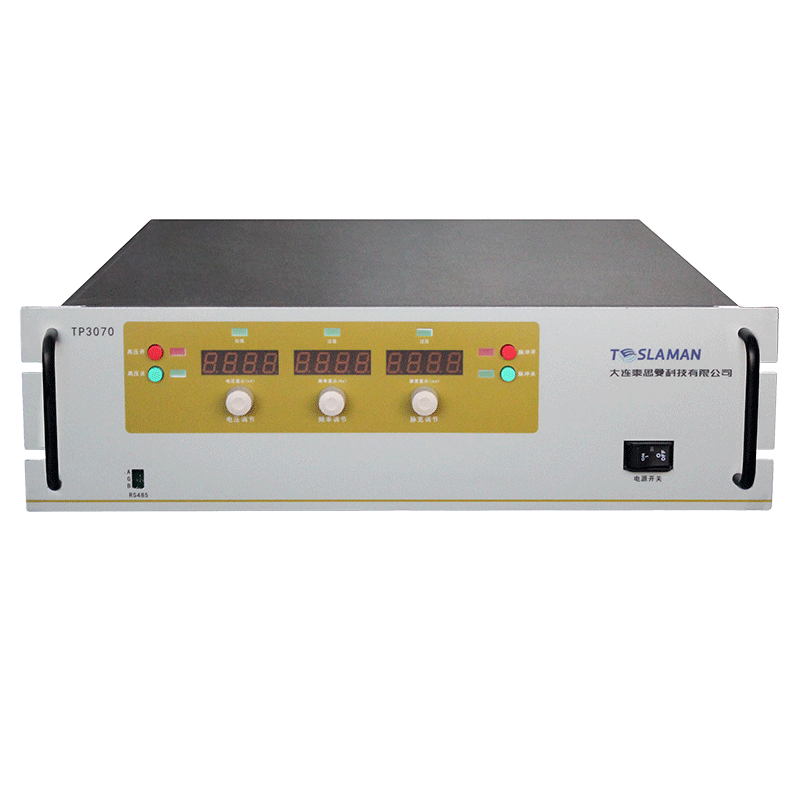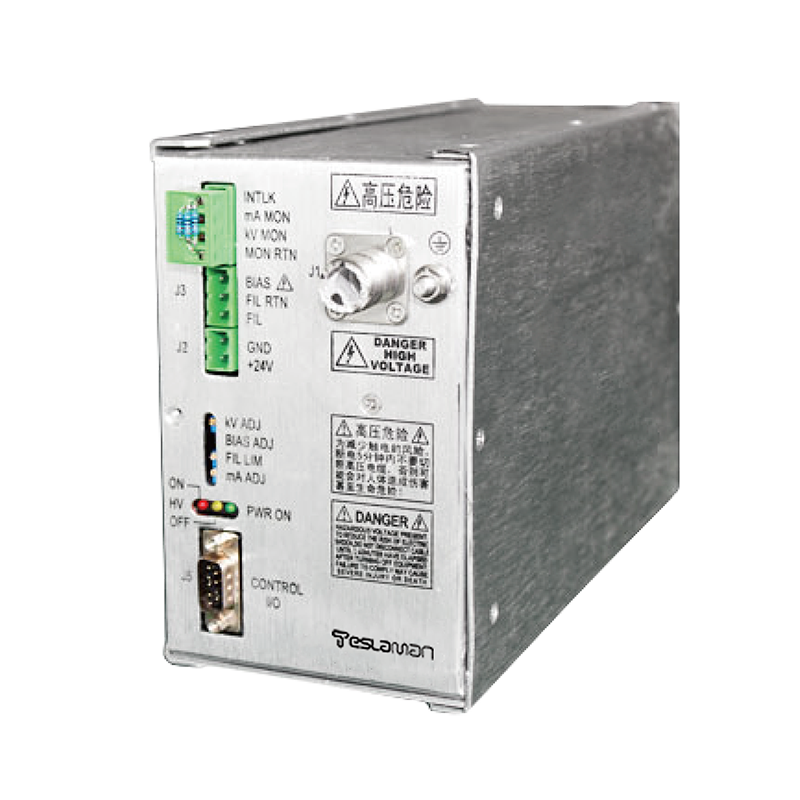Application Analysis of High-Voltage Power Supplies for Microchannel Plate Detectors
The microchannel plate (MCP) detector is a highly sensitive detection device based on the principle of electron multiplication, widely used in particle physics, astronomy, mass spectrometry, medical imaging, and other fields. As one of the core components of the MCP detector, the high-voltage power supply plays a crucial role. This article will explore the application of high-voltage power supplies in microchannel plate detectors from the perspectives of technical principles, performance requirements, and application challenges.
1. Working Principle of Microchannel Plate Detectors and the Role of High-Voltage Power Supplies
The core component of the microchannel plate detector is the microchannel plate itself, which consists of a large number of parallel-arranged micrometer-sized glass capillaries. The inner walls of these capillaries are coated with conductive materials and secondary electron emission materials. When charged particles or photons strike the surface of the MCP, they generate initial electrons. These electrons enter the microchannels and, under the influence of a strong electric field, continuously collide with the inner walls, triggering secondary electron emissions, thereby achieving signal amplification.
The primary function of the high-voltage power supply is to provide a stable DC high-voltage electric field for the microchannel plate. Typically, a voltage difference of several hundred to several thousand volts is applied across the MCP to ensure that the internal electric field strength is sufficient to effectively drive electron motion and trigger secondary electron emission. Therefore, the performance of the high-voltage power supply directly affects key indicators such as the gain characteristics, time resolution, and signal-to-noise ratio of the MCP detector.
2. Performance Requirements of High-Voltage Power Supplies
To meet the specific needs of microchannel plate detectors, high-voltage power supplies must possess several performance characteristics:
1. High Precision and Stability
Microchannel plate detectors are highly sensitive to changes in operating voltage; even millivolt-level fluctuations can lead to variations in gain or signal distortion. Therefore, high-voltage power supplies must have extremely high output voltage accuracy (typically better than 0.1%) and maintain stability during long-term operation.
2. Low Ripple and Noise
The output ripple and noise of the high-voltage power supply can directly couple into the signals of the MCP detector, affecting the accuracy of the detection results. This interference is particularly significant in scenarios involving low-energy particle detection or weak signal amplification. Thus, advanced filtering techniques and shielding measures must be employed in the design of the high-voltage power supply to reduce output ripple and electromagnetic interference.
3. Fast Response Capability
In certain dynamic experimental environments, such as pulsed particle beam detection or high-speed scanning imaging systems, the high-voltage power supply needs to quickly adjust its output voltage to adapt to varying detection conditions. This requires the power supply to have excellent transient response characteristics and programmable control functions.
4. Miniaturization and High Efficiency
Many applications (e.g., space probes or portable medical devices) impose strict limitations on size and weight, while also requiring energy efficiency. Therefore, high-voltage power supply modules should be as compact and lightweight as possible, with optimized circuit designs to improve conversion efficiency.
5. Safety and Reliability
High-voltage power supplies inherently pose certain safety risks, especially when operated in high-voltage environments. In addition to basic overvoltage protection and short-circuit protection functions, insulation design and thermal management must also be considered to ensure long-term safety and reliability.
3. Challenges in Practical Applications of High-Voltage Power Supplies
Despite significant advancements in high-voltage power supply technology, several challenges remain in the practical application of microchannel plate detectors:
1. Environmental Adaptability Issues
In extreme temperature, humidity, or radiation conditions, the performance of high-voltage power supplies may be significantly affected. For example, in space exploration missions, low temperatures may cause drift in electronic component parameters, while high-radiation environments can lead to device aging or even failure. Therefore, improving the environmental adaptability of high-voltage power supplies is an important issue.
2. Integration Design Challenges
As detection systems evolve toward multifunctionality and miniaturization, the integration of high-voltage power supplies with other components becomes increasingly complex. How to achieve efficient power distribution and thermal management within limited space while avoiding mutual electromagnetic interference is a key focus of current research.
3. Cost and Cost-Performance Balance
Although high-performance high-voltage power supplies can significantly enhance the overall performance of detectors, their high development and manufacturing costs often act as constraints. Balancing performance with cost reduction is crucial for promoting widespread adoption.
4. Future Development Trends
With continuous advancements in science and technology, the application prospects of high-voltage power supplies in the field of microchannel plate detectors are vast. Below are some noteworthy trends:
1. Intelligent Control
Leveraging technologies such as digital signal processing (DSP) and field-programmable gate arrays (FPGA), future high-voltage power supplies will become more intelligent, capable of real-time self-monitoring and automatic adjustment of output parameters to better match the operational needs of detectors.
2. New Materials and Processes
The application of new semiconductor materials (such as silicon carbide and gallium nitride) is expected to further enhance the efficiency and tolerance of high-voltage power supplies while reducing their size and weight.
3. Green Environmental Concepts
In the context of global advocacy for energy conservation and emission reduction, the development of low-power, pollution-free high-voltage power supply products will become an important direction in the industry.
5. Conclusion
In summary, as an indispensable part of microchannel plate detectors, the performance of high-voltage power supplies directly determines the detection capabilities and application scope of the entire system. Facing increasingly complex scientific explorations and industrial demands, researchers need to address technological innovation, process improvement, and cost control from multiple dimensions to continuously optimize the design and manufacturing levels of high-voltage power supplies, laying a solid foundation for the widespread application of microchannel plate detectors.




















